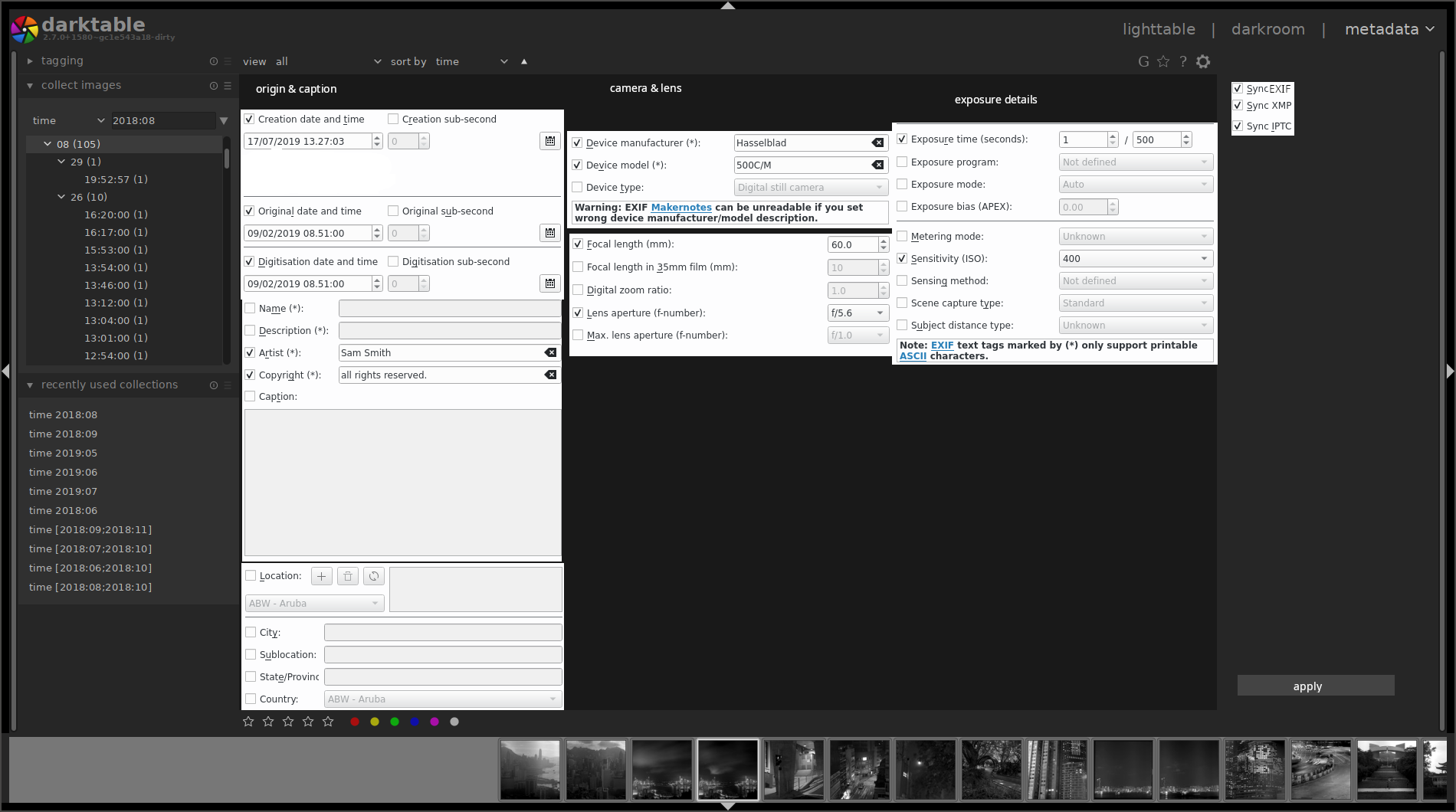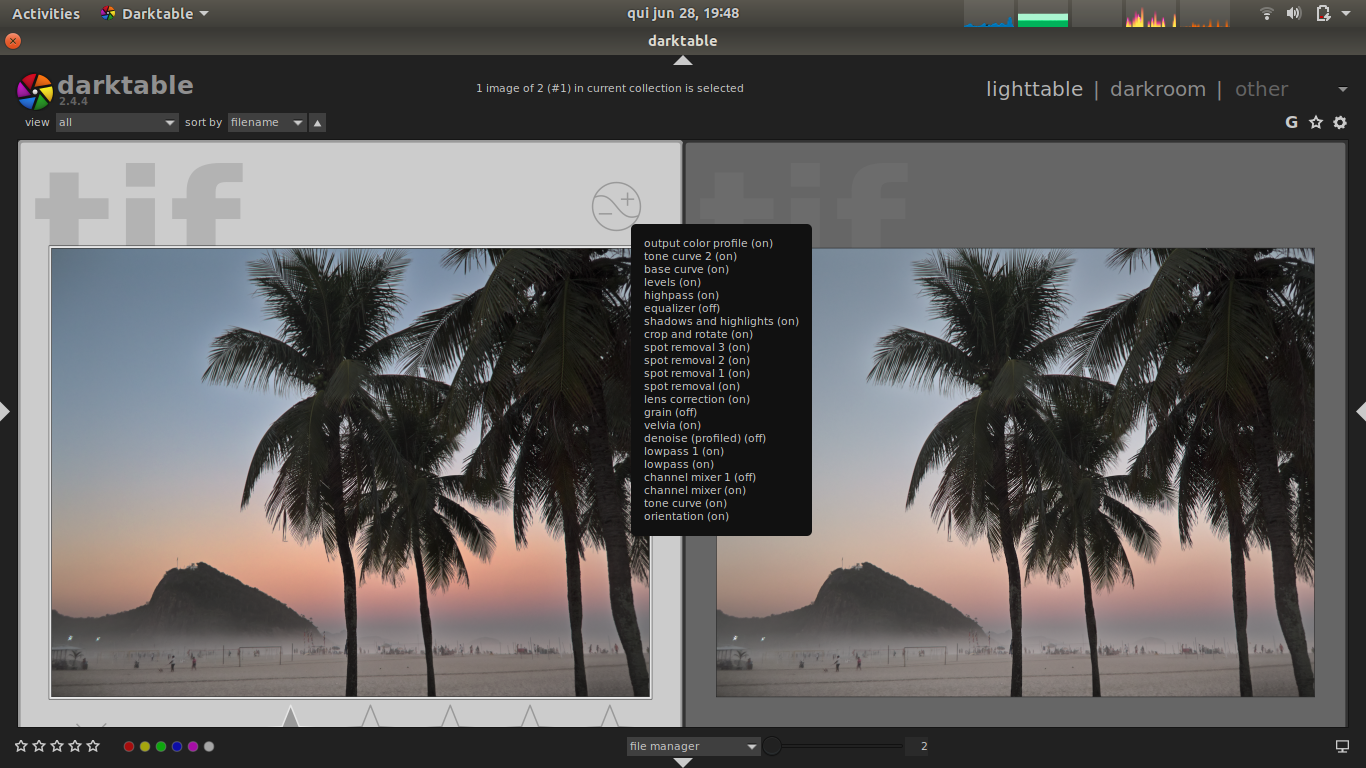

Powerful export system supports Piwigo webalbums, disk storage, 1:1 copy, email attachments and can generate a simple html-based web gallery.As the list of supported translations changes with each release, you are advised to check the news page for more details. Speaks your language: darktable is also translated into more than a dozen different languages.Tethered shooting: support for instrumentation of your camera with live view for some camera brands.

#Darktable export software
#Darktable export mac os x
Cross platform: darktable runs on Linux, Mac OS X / macports, BSD, Windows and Solaris 11 / GNOME.
#Darktable export professional
Professional color management: darktable is fully color managed, supporting automatic display profile detection on most systems, including built-in ICC profile support for sRGB, Adobe RGB, XYZ and linear RGB color spaces.GPU accelerated image processing: many image opertions are lightning fast thanks to OpenCL support (runtime detection and enabling).Take advantage of the real power of raw: All darktable core functions operate on 4x32-bit floating point pixel buffers, enabling SSE instructions for speedups.Non-destructive editing throughout the complete workflow, your original images are never modified.You can find a more detailed description of every single item in our online user manual. Note: While JPEG is useful for most purposes, if you wish to perform further edits in a raster editor like GIMP or Krita, it is normally better to export in tiff format.Here is a short list of highlights where darktable can improve your digital photography processing workflow and help you to make better images with less effort. Choose a “file format” of JPEG and keep the default settings.Ĭlick the “export” button to save your processed images in the selected location. Select which images to export (if you are in the lighttable view), open the export module, set target storage to “file on disk” and select a location to save your images – by default, they will be exported to a “darktable_exported” directory within the directory that contains your Raw file(s). You can either export the currently-edited image directly from the darkroom view or select one or more images from the lighttable view and export them all at once. The export module offers many options, but by far the most common use is to “save a developed raw image as a JPEG”. You therefore need to export images in order to bake your edits into an output file that can be distributed outside of darktable. Darktable is a non-destructive editor, which means that all changes are recorded in the library database (with a backup stored in an XMP sidecar file), and the original Raw file is left untouched.


 0 kommentar(er)
0 kommentar(er)
